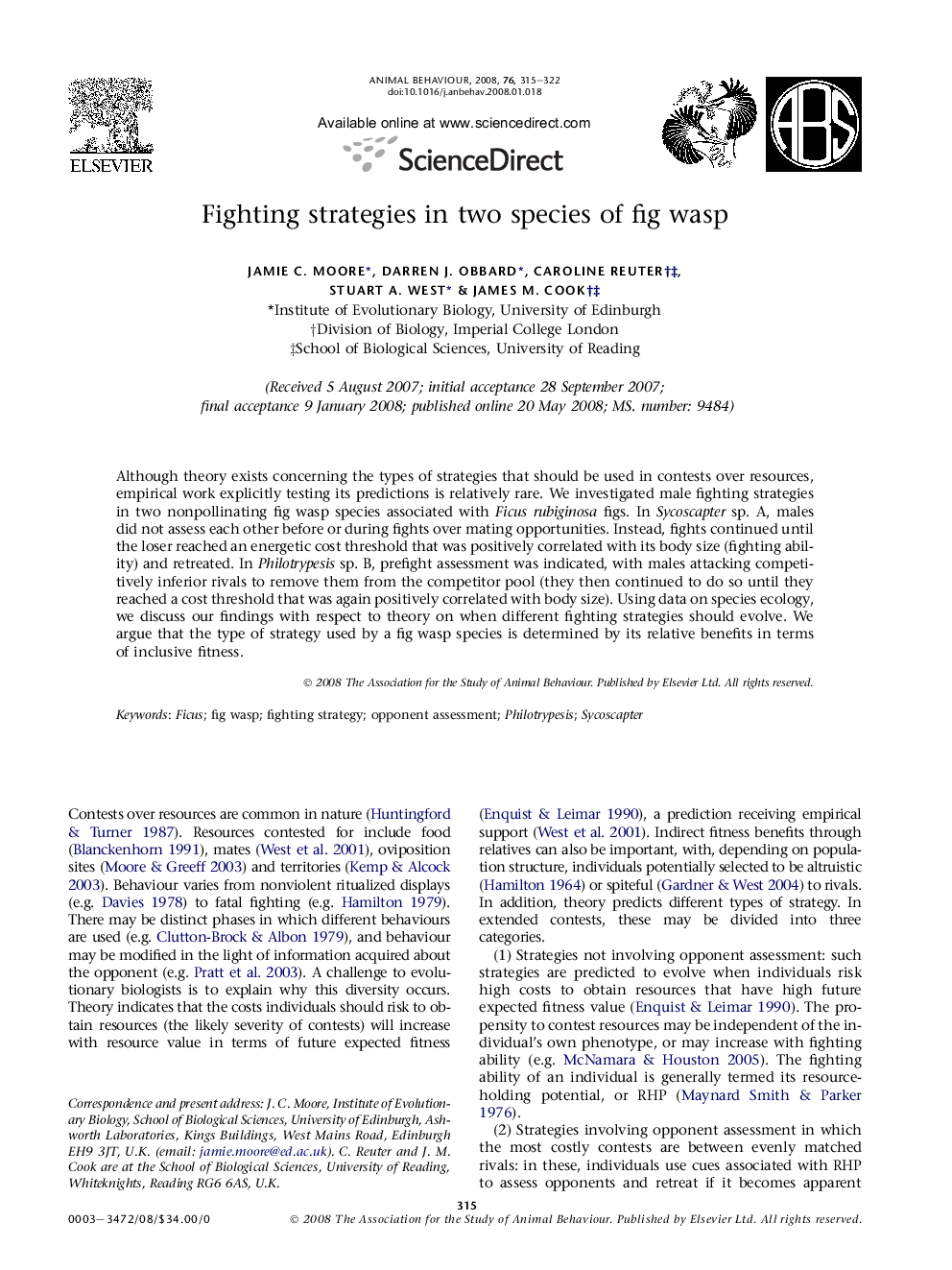| Article ID | Journal | Published Year | Pages | File Type |
|---|---|---|---|---|
| 2418867 | Animal Behaviour | 2008 | 8 Pages |
Although theory exists concerning the types of strategies that should be used in contests over resources, empirical work explicitly testing its predictions is relatively rare. We investigated male fighting strategies in two nonpollinating fig wasp species associated with Ficus rubiginosa figs. In Sycoscapter sp. A, males did not assess each other before or during fights over mating opportunities. Instead, fights continued until the loser reached an energetic cost threshold that was positively correlated with its body size (fighting ability) and retreated. In Philotrypesis sp. B, prefight assessment was indicated, with males attacking competitively inferior rivals to remove them from the competitor pool (they then continued to do so until they reached a cost threshold that was again positively correlated with body size). Using data on species ecology, we discuss our findings with respect to theory on when different fighting strategies should evolve. We argue that the type of strategy used by a fig wasp species is determined by its relative benefits in terms of inclusive fitness.
